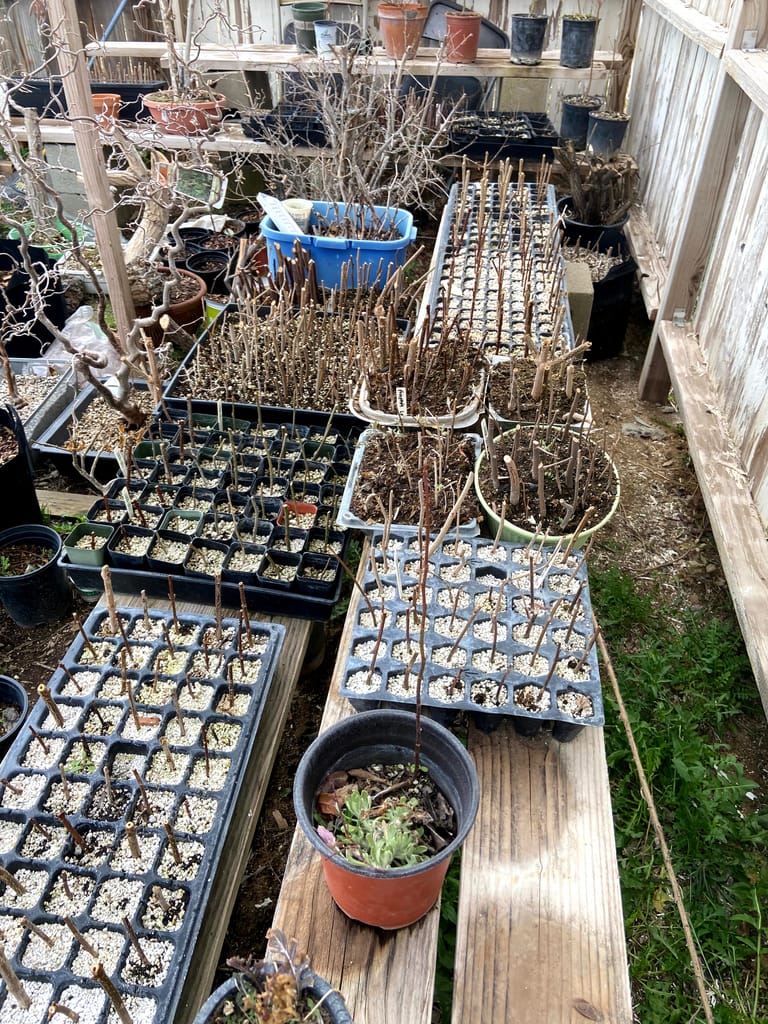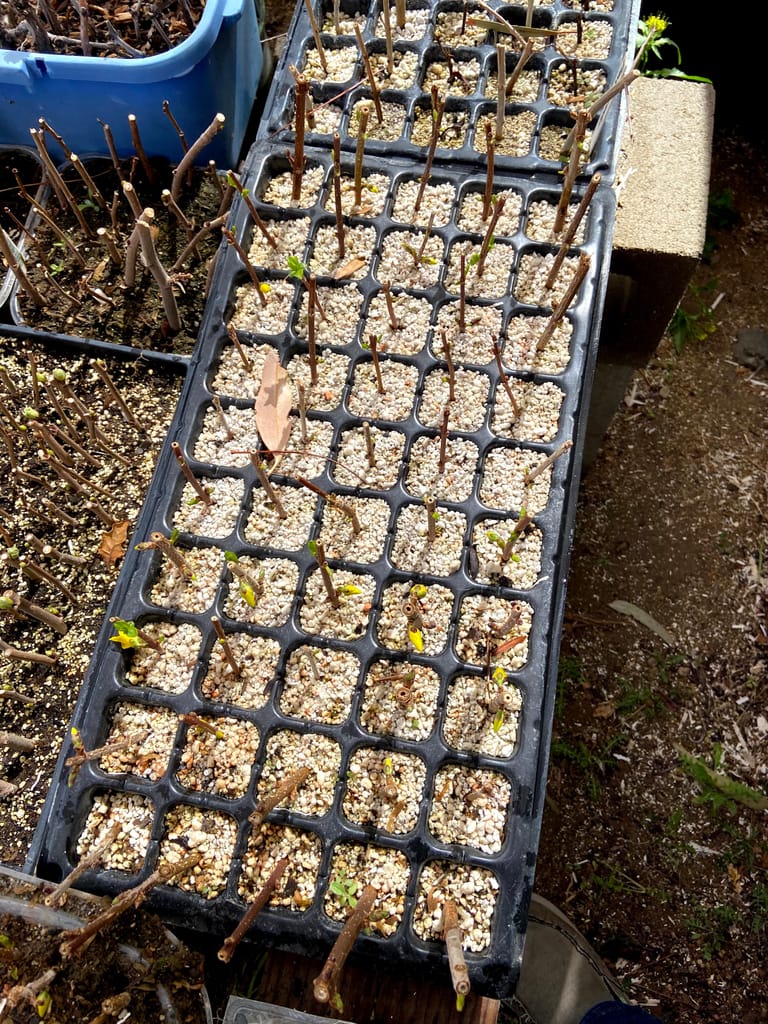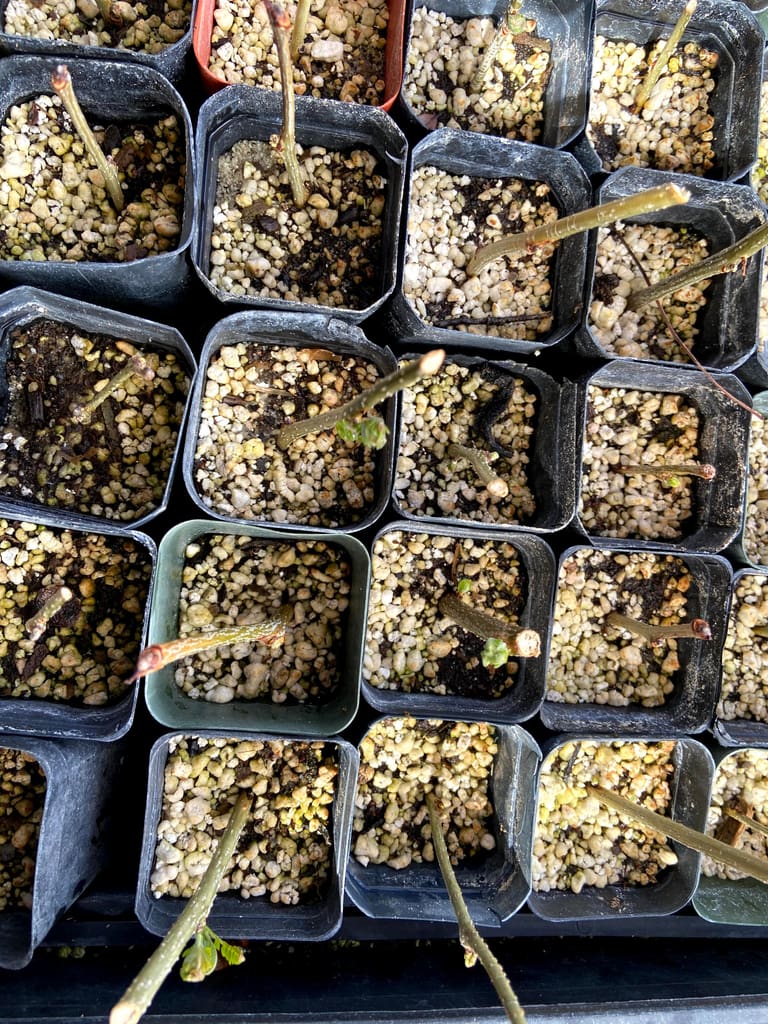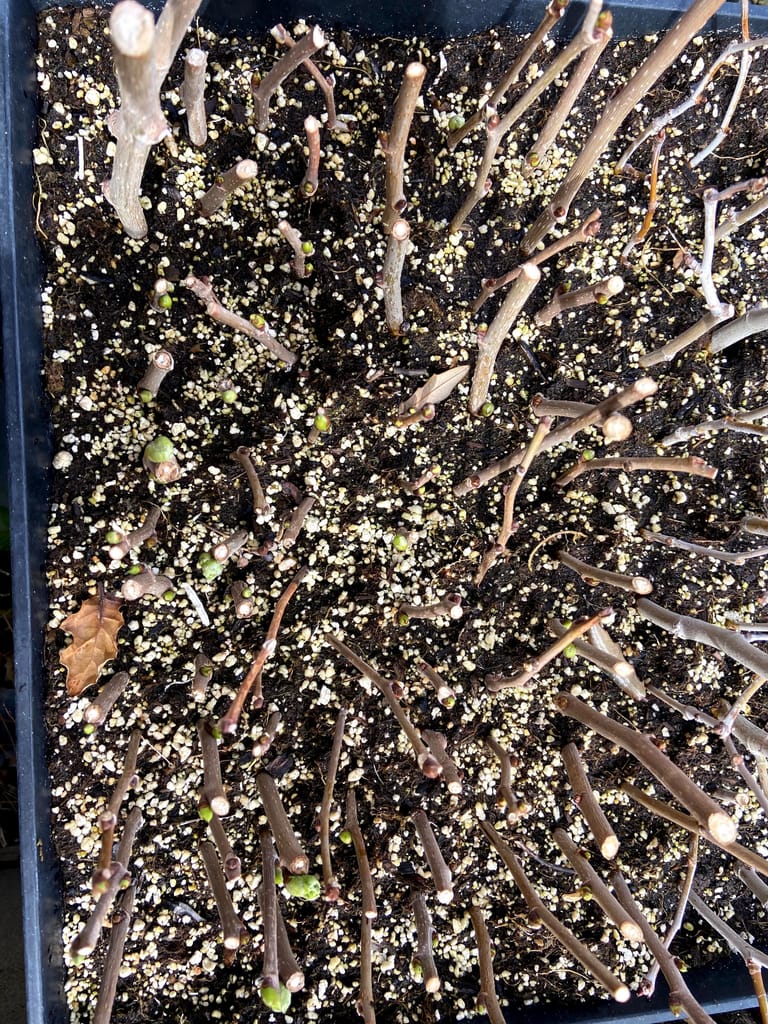



The success rate of these cuttings is over 90%. The Zelkova Serrata also known as Japanese Elm or Sawleaf Zelkova has had a relatively low success rate at around 40%.
The soil used didn’t seem to make any difference in success. I used a 50/50 mix of perlite and peat moss, pure compost, partially composted wood chips, and a nursery soil blend made for container growing.
